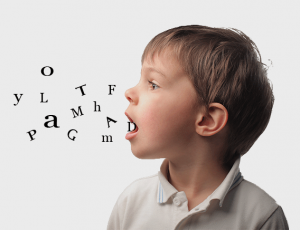Speech and Language Intervention
Conveniently located to serve the areas of Santa Monica, Venice, South Bay, Brentwood, Beverly Hills, Pasadena and all of Greater Los Angeles
Contents
- 1 What is Speech and Language Intervention
- 2 Who Should do Language Intervention?
- 3 Most Common Speech and Language Specific Diagnoses
- 4 Programs for Language Intervention
- 5 Fast ForWord Programs
- 6 Lindamood Bell Programs
- 7 Laureate Learning Systems Programs
- 8 Language Links Syntax Assessment and Intervention Series
- 9 Simple Sentence Structure
- 10 Question Quest
- 11 Pronoun Perspective
- 12 Prepositions
- 13 iLs Program
- 14 Hear Builder
- 15 Neurofeedback Training
What is Speech and Language Intervention

All Language intervention, whether it is to remediate language in the area of expressive language or receptive language incorporates the examination and remediation in any of the following basic areas of language competence:
Phonological Skills
This is knowledge of the sound system of language and the rules that govern how sounds are combined into larger units such as syllables and words.
Morphology
The knowledge of inflections and other segments that alter words in order to indicate such things as number, tense, and possession.
Syntax
This is knowledge of the grammatical patterns and rules for combining words to make sentences.
Semantics
This is vocabulary knowledge and knowledge of words meanings in the language. It is the meaning that is conveyed when words are combined with one another.
Pragmatics
These are the rules and guidelines for social language skills such as the rules of engagement, turn-taking and choosing what message to send in various social situations.
Supralinguistics
This is comprehension of complex language where meaning cannot be derived from the grammatical or lexical information provided, it must be inferred.
Who Should do Language Intervention?
Language and communication challenges are often either a main feature or secondary feature of a variety of disorders and conditions including:
- Learning Disabilities
- Autism Spectrum Diisorders
- Attention deficit disorders
- Behavioral disorders
- Cognitive delays
- Sensory processing Delays
- Auditory Processing disorders
- Anxiety disorders
- Non-verbal learning disorders
- Reading Disorders
Most Common Speech and Language Specific Diagnoses
Some of the most common speech and language specific diagnoses are:
- Aphasia
- Speech Sound Disorders – Articulation and phonological disorders
- Motor Speech Disorders- Dysarthria, Apraxia
- Stuttering
- Voice Disorders
- Traumatic Brain Injury
- Cognitive-Linguistic Disorders
- Auditory Processing Disorder
- Reading Disorders
- Dyslexia
- Cleft Palate
- Disorders of Written Expression
- Expressive Language Disorder
- Receptive Language Disorder
- Mixed Expressive and Receptive Language Disorder
- Language Processing Disorders
- Non-Verbal learning Disorders
Programs for Language Intervention
Language is a core skill that is often a component of a broad range of disorders and delays. Language intervention is often one of the main areas addressed in the overall treatment plan for many individuals. There are hundreds of language programs on the market. The effectiveness of these programs lies in the appropriateness of the assessment tools used to diagnose the language deficit. Combining neuroimaging through qEEG Brain Mapping with psychometric testing improves accuracy of pinpointing the exact areas of language that are affected.
Speech and language disorders commonly co-occur with other learning disorders and behavioral disorders, intervention will often require combining various treatment approaches and programs.
One size fits all approaches to language intervention often do not benefit the client because every client is different with different levels of challenges in different areas.
Language intervention often involves the integration of variety of treatment methods and programs to target the areas of deficiency as identified in the initial assessment. Speech pathologists are trained to provide intervention in many areas of speech and language from early childhood intervention to adolescents and adults. The intervention approaches will vary depending upon the diagnoses and the resulting description of the specific areas impacted.
Our Speech pathologists combine a variety of therapy approaches as part of their intervention. These interventions combine non-software-based activities as well as software-based activities. The software-based programs that are used in therapy have been scientifically proven and are evidence-based for their effectiveness in the area of language intervention. These programs have been shown to be much more effective when combined with the neurofeedback training. Neurofeedback training provides the primary support structure for the underlying cognitive and primary language skills required for comprehensive language remediation.
Fast ForWord Programs
Scientific Learning provides a variety of programs which emphasize training and remediation of auditory processing systems, language systems and reading skills. Their programs have been successful in the treatment of auditory processing delays and disorders. Each Fast ForWord Language program provides exercises for different levels of auditory processing and language processing from the earliest levels of processing the elements of sound to later levels of processing multi-step instructions and language comprehension tasks. Each level the program is designed to prepare the brain for learning through working on key foundational aspects of cognitive functioning, processing speed, memory, and attention.
Lindamood Bell Programs
The Lindamood Bell reading programs focus on the sensory-cognitive processing and language processing skills used for reading and comprehension. These skills include word attack, sight word recognition, contextual fluency, oral vocabulary and comprehension.
The programs used in the integrative model for intervention are:
- LiPS phoneme sequencing program – This program provides a multi-sensory approach to systematically teach phonological awareness, decoding, spelling and reading.
- Visualizing and Verbalizing for Language Comprehension and Thinking
This program develops concept imagery in order to facilitate comprehension skills. Increased concept imagery has been shown to improve reading, listening, comprehension, memory, vocabulary, critical thinking, and writing skills.
Laureate Learning Systems Programs
Language Links Syntax Assessment and Intervention Series
Syntax has been described as an area of language most often impaired in children and adults with language disorders and delays. Impairments in the area of syntax can significantly impact overall communication proficiency in language production and in language comprehension.
Language Links Syntax Assessment and Intervention Series is a six -level series software program designed to remediate syntactic skills in children from the early two stage word level to the level of mastery of a wide range of syntactic forms (18-48 months). This is achieved through six levels of training with 36 different modules in total teaching a total of 75 grammatical forms used in the English language. The program is based upon a linguistic hierarchy that describes seven stages of syntactic development. The language links syntax program is designed to target each of the following stages of development from early infants through to the adult years:
- 1. Interpreted Communication (Birth-4 months)
- 2. Intentional Communication (4-9 months)
- 3. Single Words (9-18 months)
- 4. Word Combinations (18-24 months)
- 5. Early Syntax (24-36 months)
- 6. Syntax Mastery (3-5 years)
- 7. Complete Generative Grammar (5 years-adult)
Simple Sentence Structure
This program targets training in the area of word order (Subject-Verb-Object) to convey meaning. This program is ideal for children and adults who make errors in oral language production and comprehension based on deficits in understand word combinations and sequences at the sentence level. The program is also appropriate for children with more significant language delays who are at the one-word stage of development, have a solid vocabulary of over 100 words, but who have not yet begun to combine words into meaningful phrases and sentences because of difficulties with word order.
Question Quest
This program trains the production and comprehension of both the syntax and the semantics of various forms of questions. There are 21 modules presented over three levels. Each module trains various combinations of the following question formats: who, what, where, why, how, with what, and yes/no questions. Each of the three levels of this program build upon the other in terms of level of difficulty and complexity of the syntactic and semantic structures.
Pronoun Perspective
This program provides training in the area of 1st and 2nd person pronouns (speaker-listener) relationships using the following 8 modules:
- 1. Me/You
- 2. My/Your
- 3. I/You
- 4. Us/You
- 5. We/You
- 6. Our/Your
- 7. Mine/Yours
- 8. Ours/Yours
In addition to training these modules it targets social communication and helps to develop a 3rd person perspective (the observer). Many children with language impairments struggle with describing and understanding narrative texts that require an understanding of “who said what to whom.”
Prepositions
Mastery of prepositions is essential to overall language development. This program trains 10 main prepositions in a format where they have to follow directions. There are six modules in this program which teach the following prepositions:
- 1. In/On
- 2. In/On/Under
- 3. Above/Below
- 4. In Front Of/In Back Of
- 5. In Front Of/ Next To/In Back Of
- 6. In Front Of/Between/Behind
These concepts are trained using three dimensional characters and objects to increase client engagement and focus.
iLs Program
The iLs program is an exercise program for the brain and the body that combines the elements of music, balance, movement and language to support the sensory processing mechanisms.
The program targets the foundations of learning and behavior through multisensory input to the motor, visual, vestibular, and auditory systems. It does this in a hierarchical manner with the early phases of intervention supporting sensory processing and later levels gradually increasing to higher order cognititve functions. Together, the body and brain become better organized and primed for improved processing of environmental information, improved attention, and overall improved learning.
Hear Builder
Hear Builder is a program that addresses language and auditory processing skills in children from PreK to eighth grade. It provides individualized instruction at three levels of difficulty in 5 key areas of auditory and language development. Within each key area there are specific activities designed to target the multiple skills sets which are required for mastery of the domain. The following 5 areas and their skills sets are as follows:
Phonological Awareness
- Sentence Segmentation
- Syllable Blending
- Syllable Segmentation
- Rhyming
- Phoneme Blending
- Phoneme Segmentation and Identification
Phonological Sequencing
- Place 2 of 3 Step Story Sequences with Pictures, Text, and Audio
- Place 3 of 3 Step Instructional Sequences with Pictures and Audio
- Place 3 of 4 Step Instructional Sequences with Text and Audio
- Place 4 of 4 Step Story Sequences with Pictures and Text
Following Directions
- Basic Directions
- Seqential Directions
- Quantitative and Spatial Directions
- Temporal Directions
- Conditional Directions
Auditory Memory
- Memory for Numbers
- Memory for Words
- Memory for Details
- Auditory Closure
- Memory for WH Information
- Memory Strategies
Neurofeedback Training
Speech and language centers of the brain have been well documented and mapped through the Brodmann system. Performing a Brain Map/Qeeg assessment is essential to identifying possible deficiencies in the speech and language areas of the brain. If deficiencies in the speech and language systems occur, the clinician is able to locate these areas of deficiency with relative specificity, and train them using neurofeedback.




